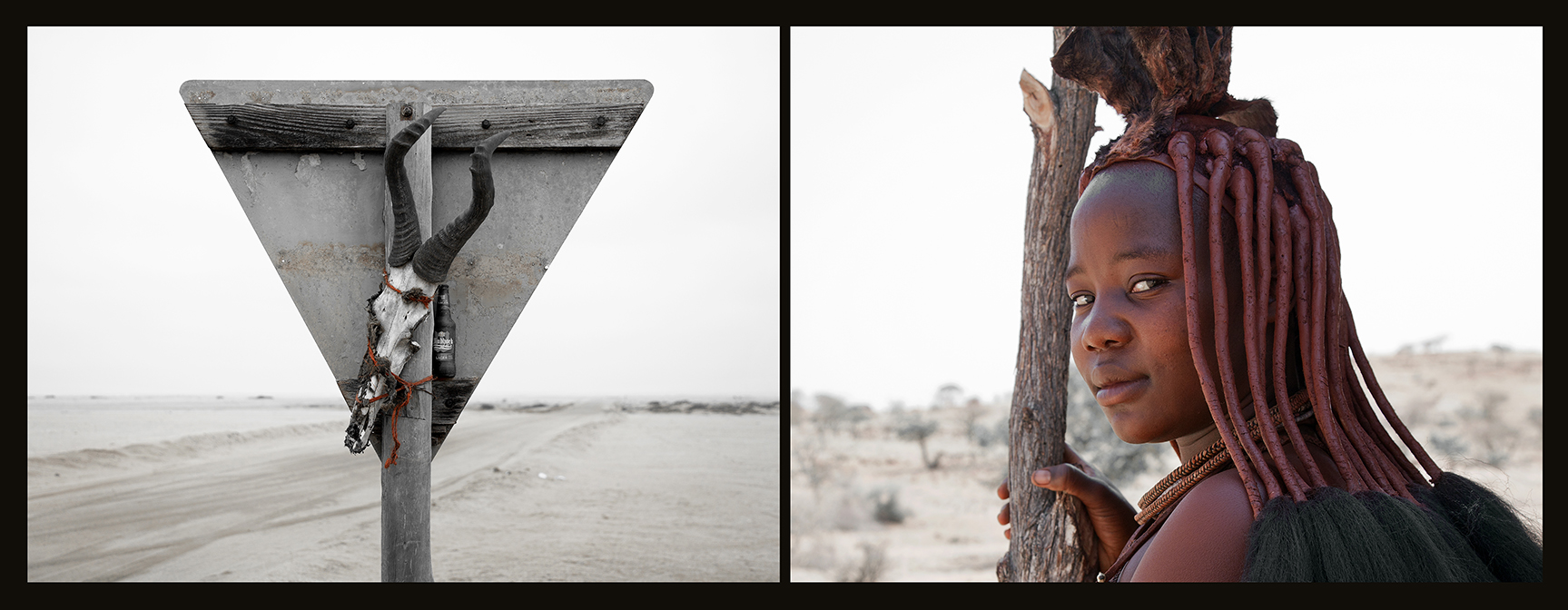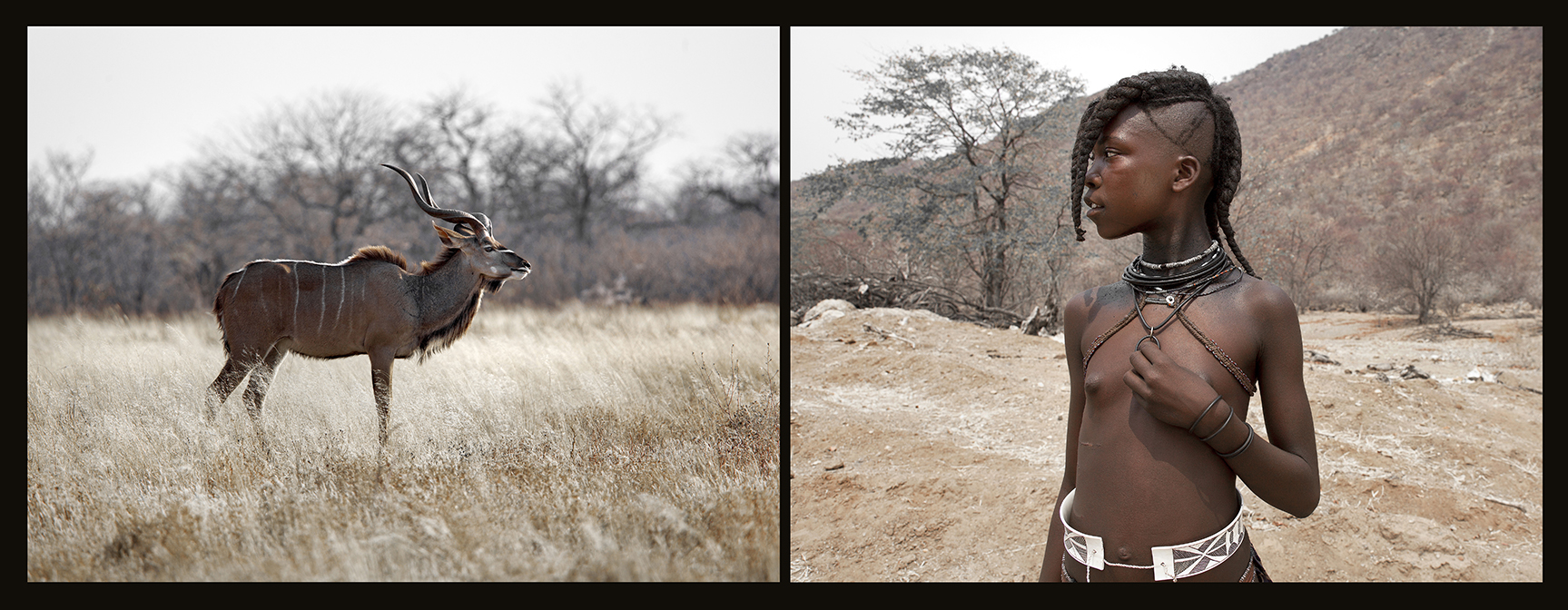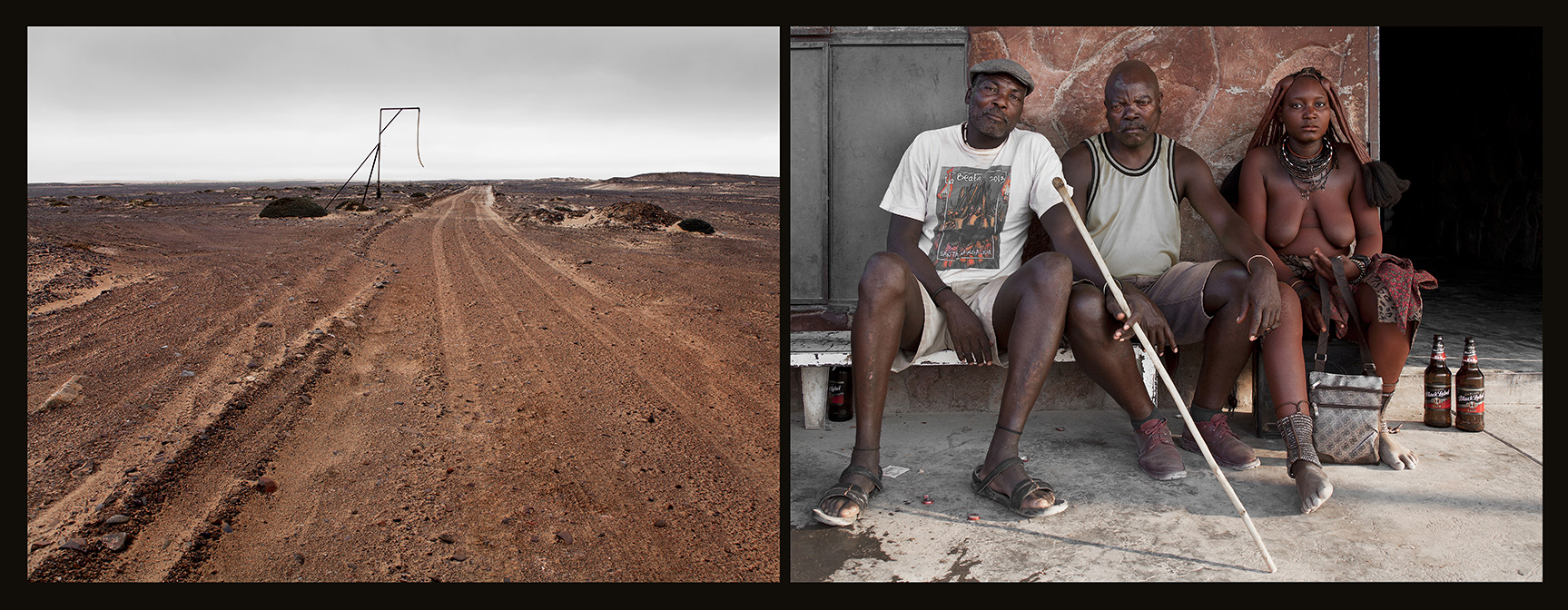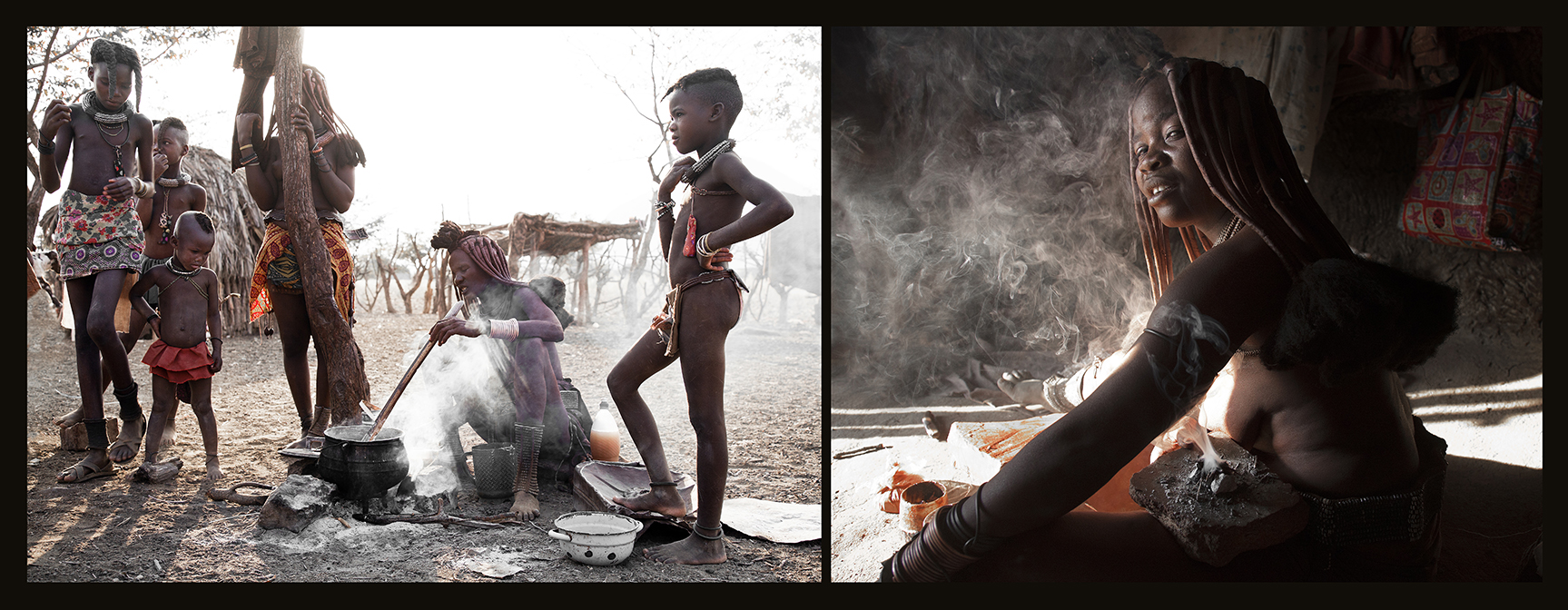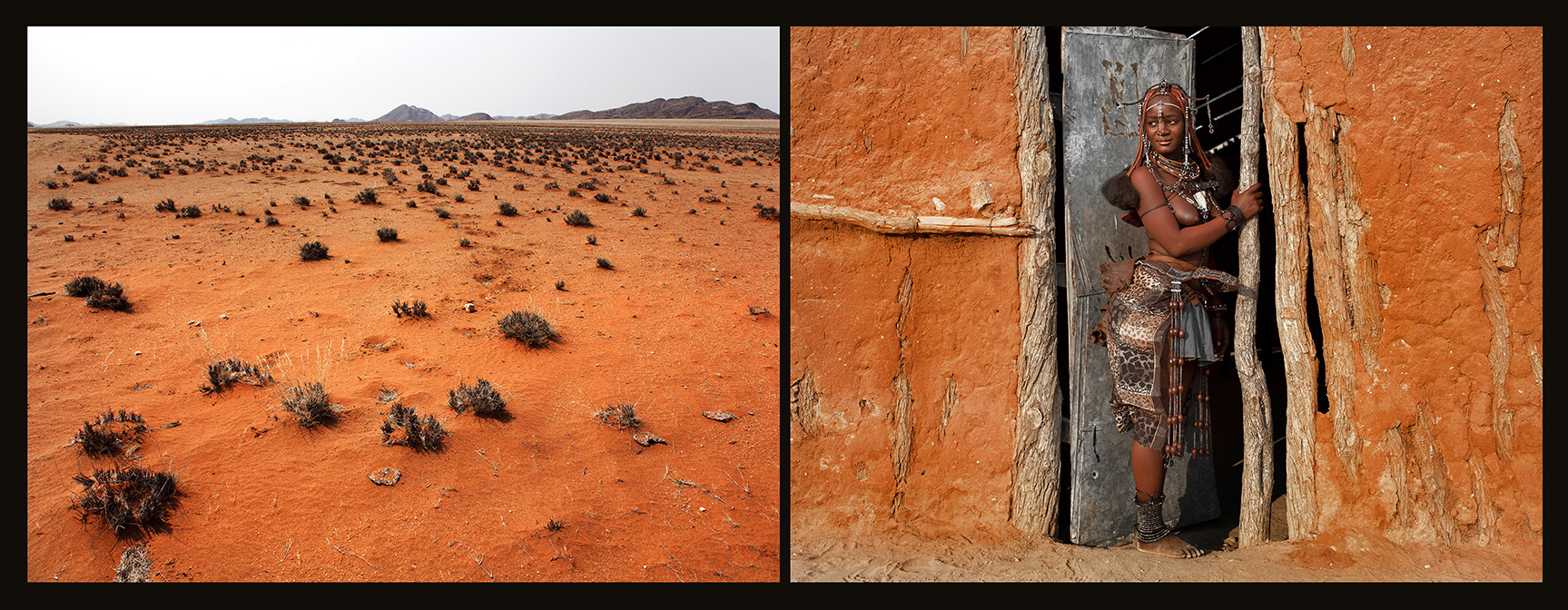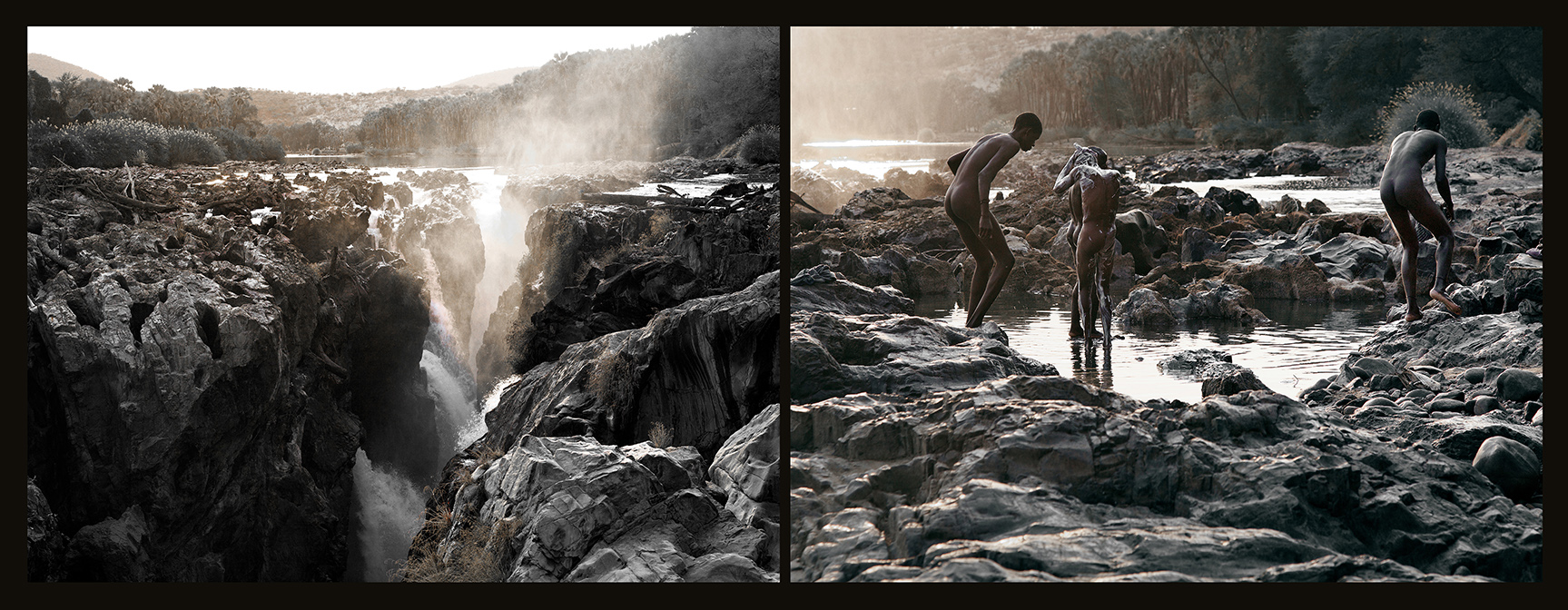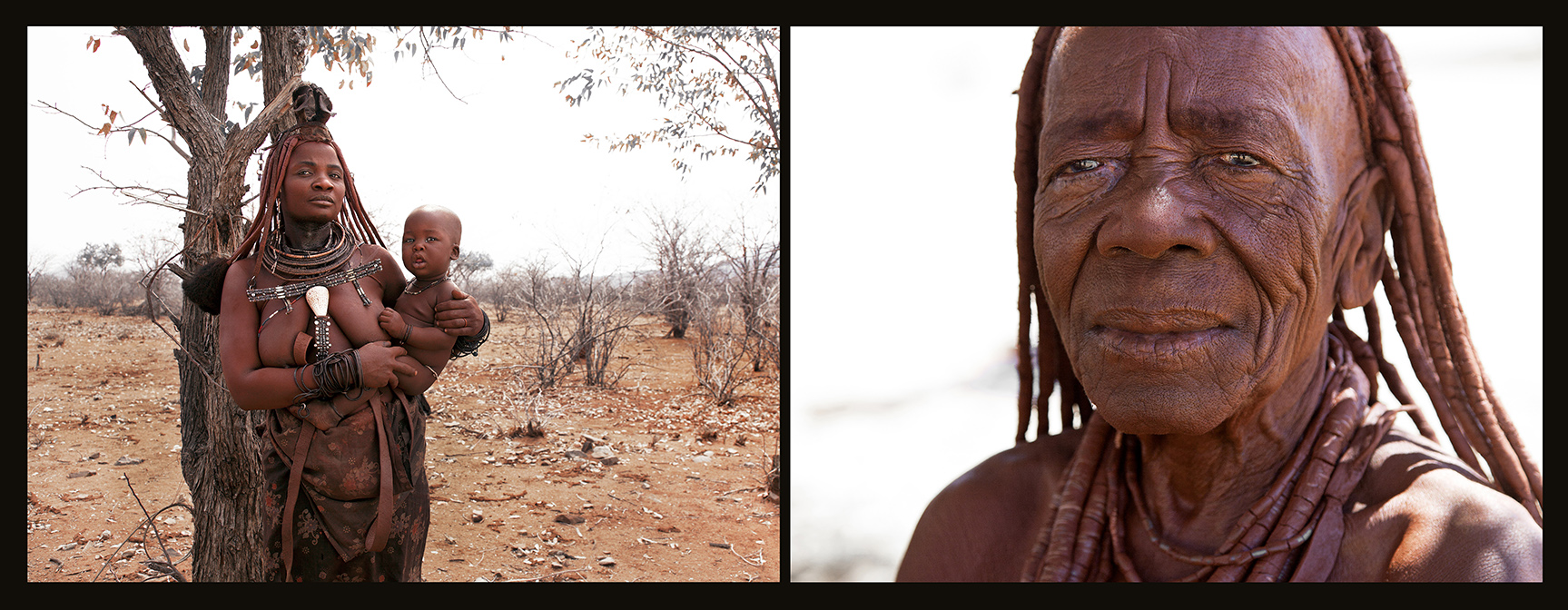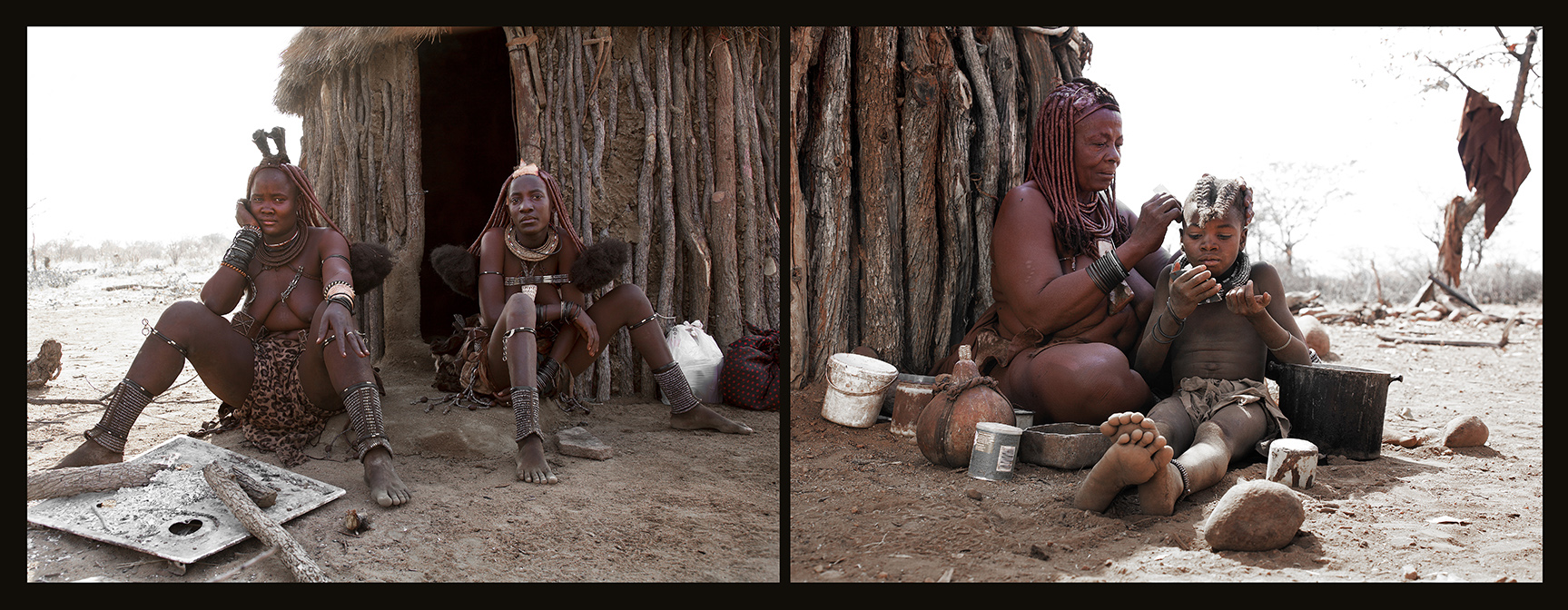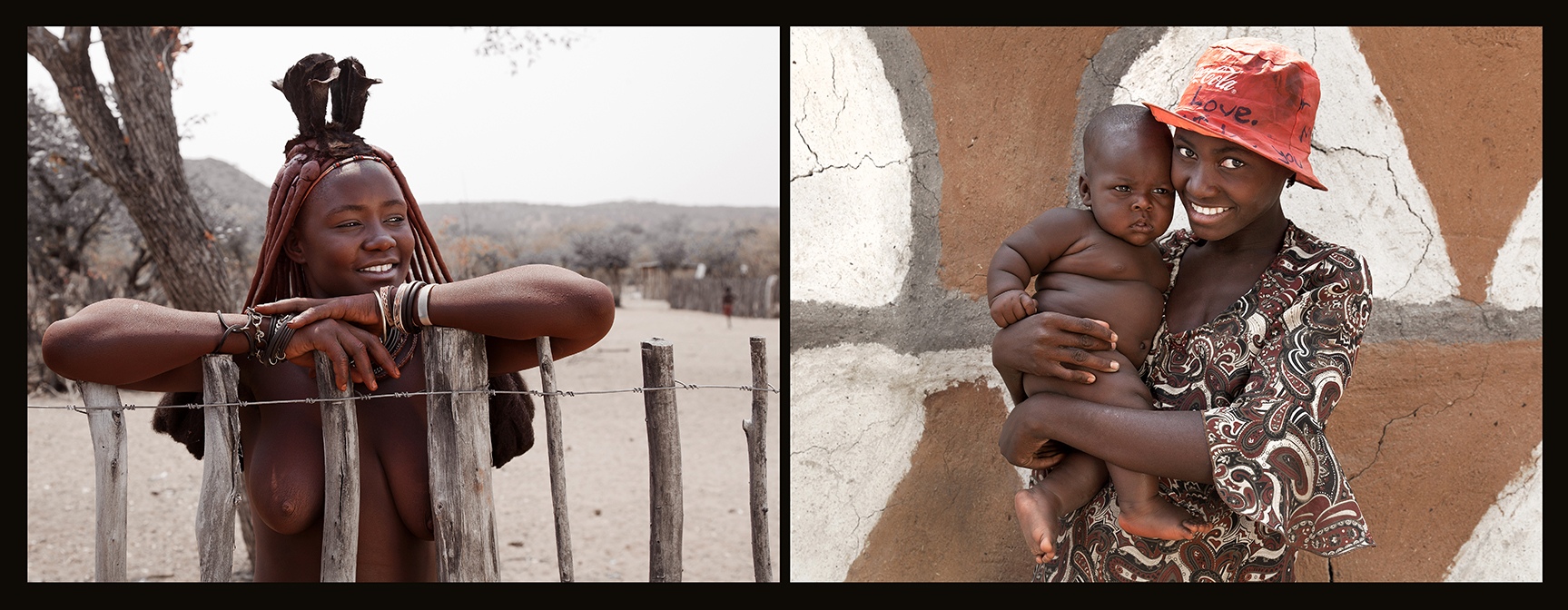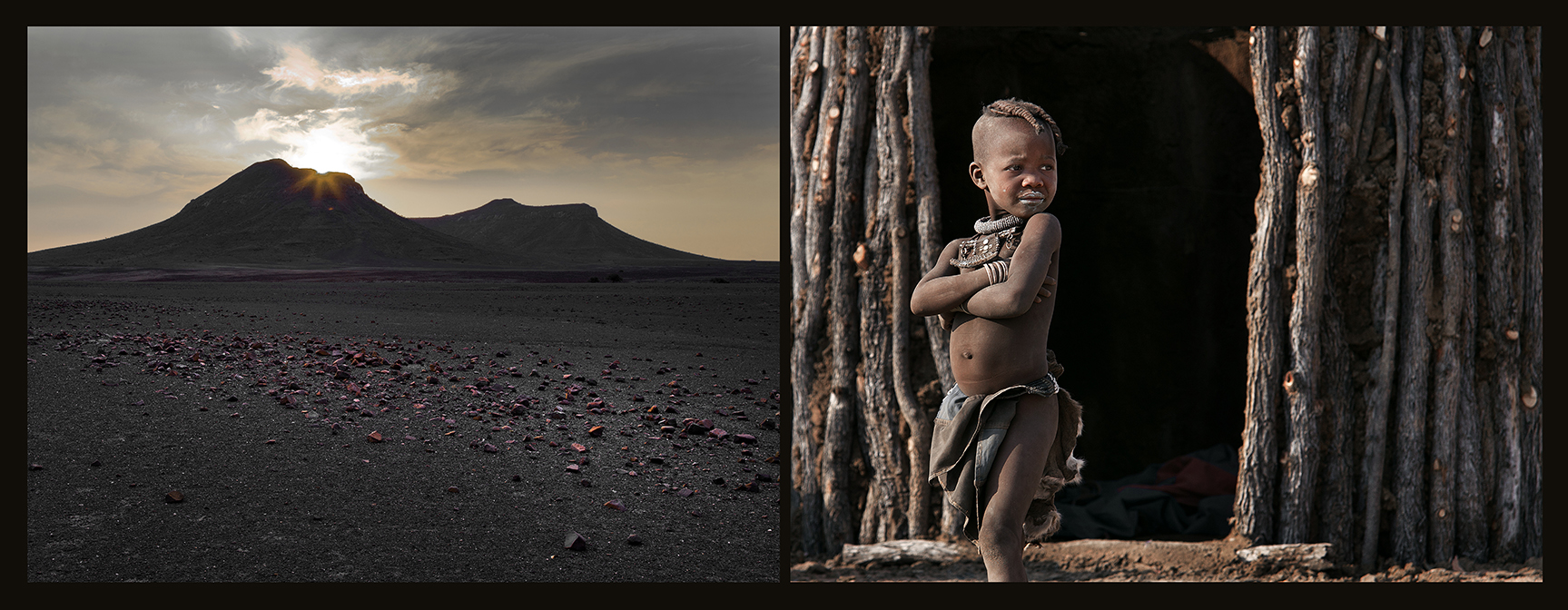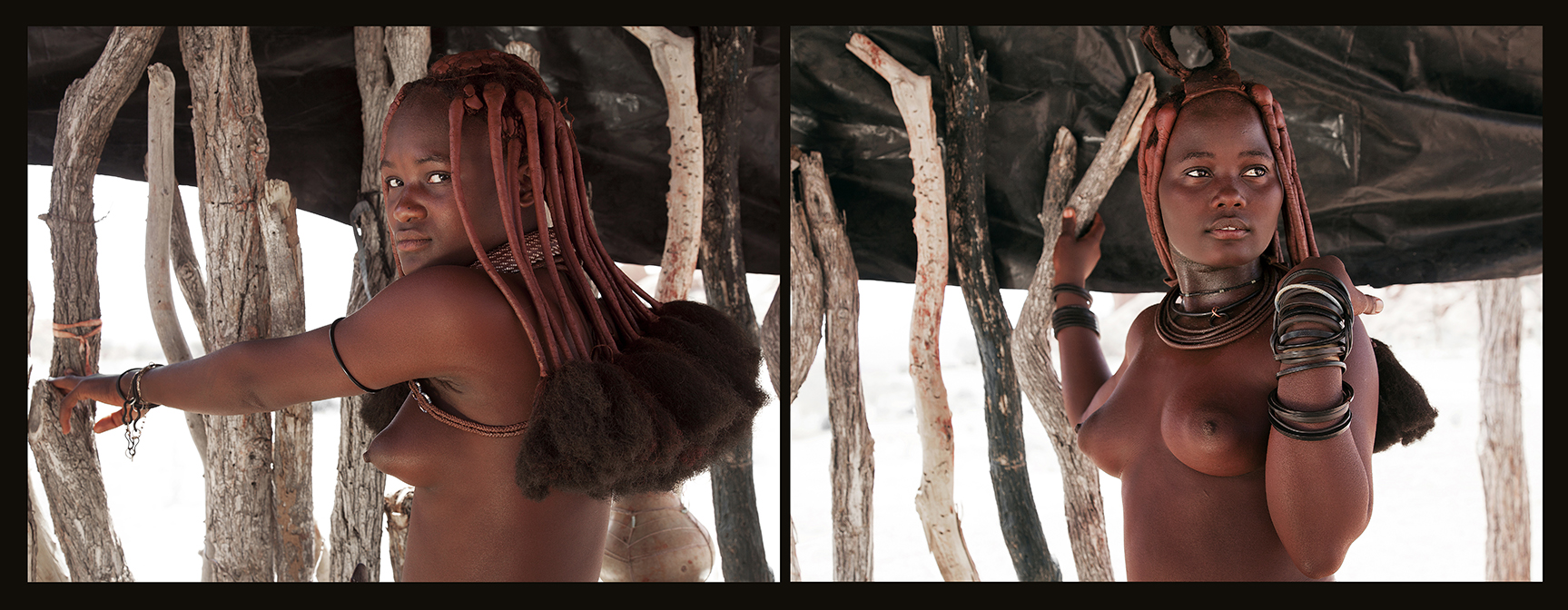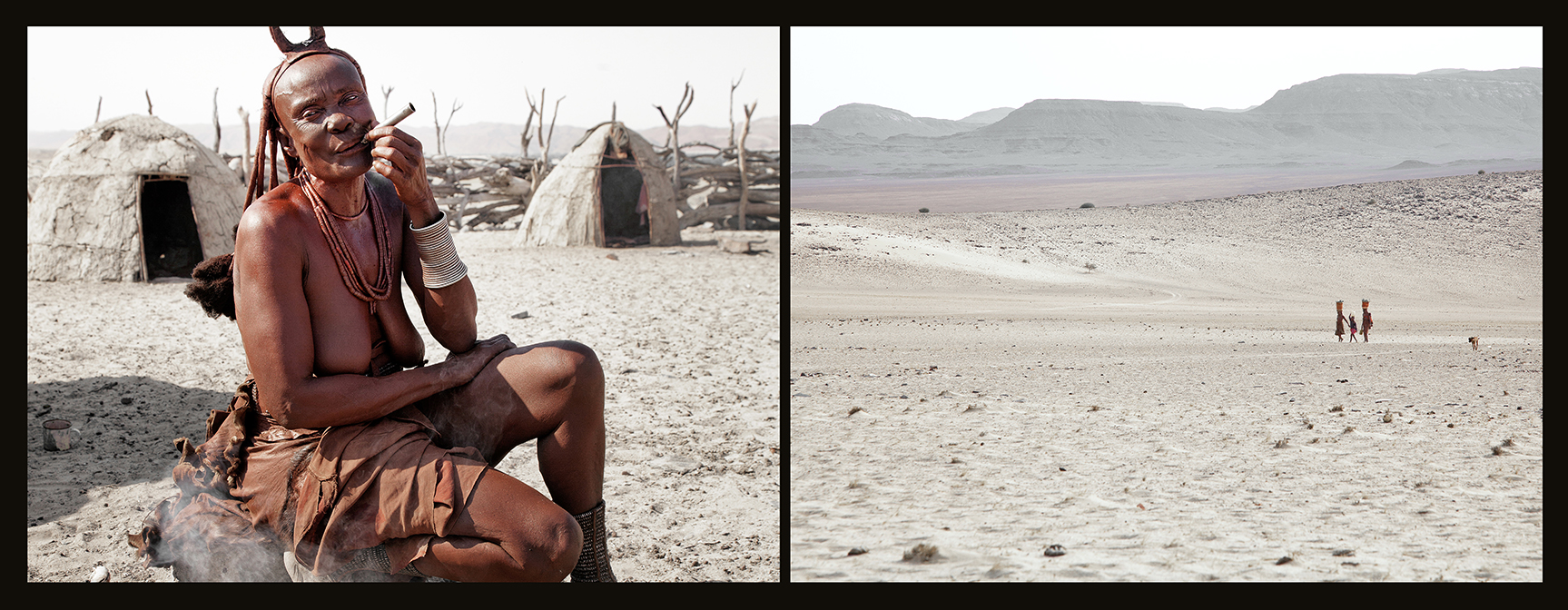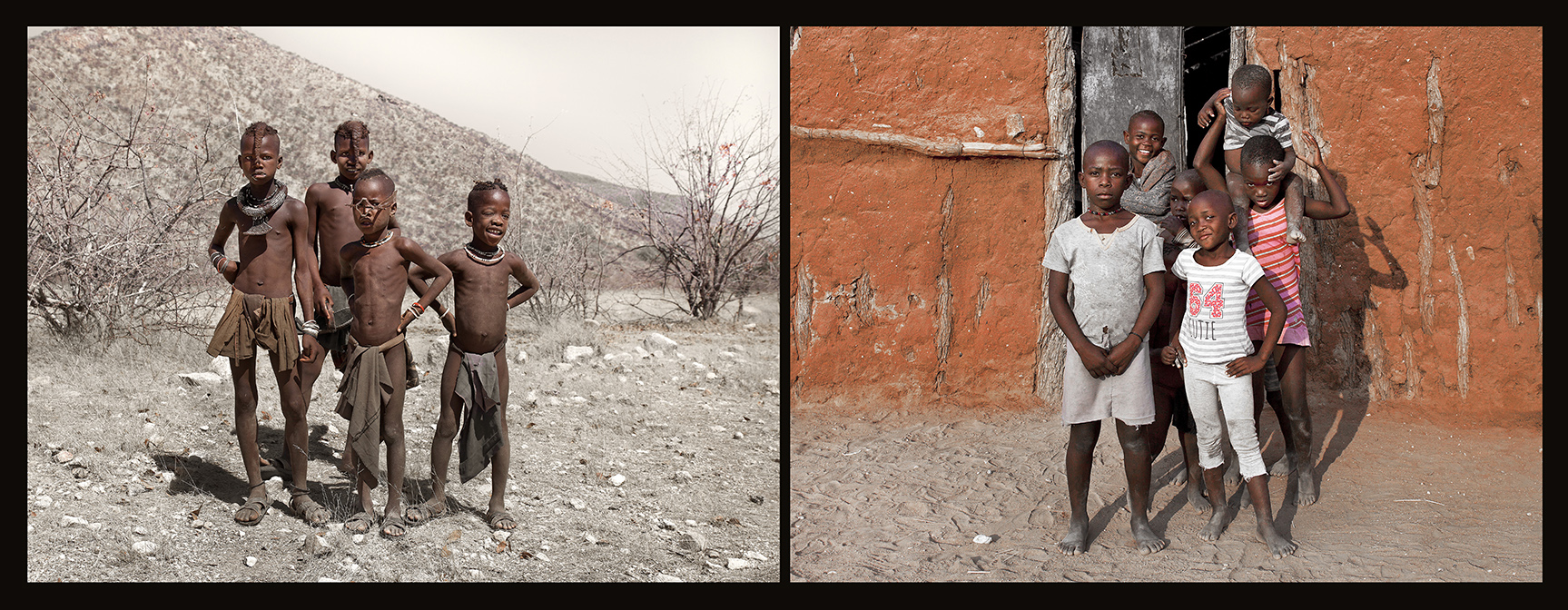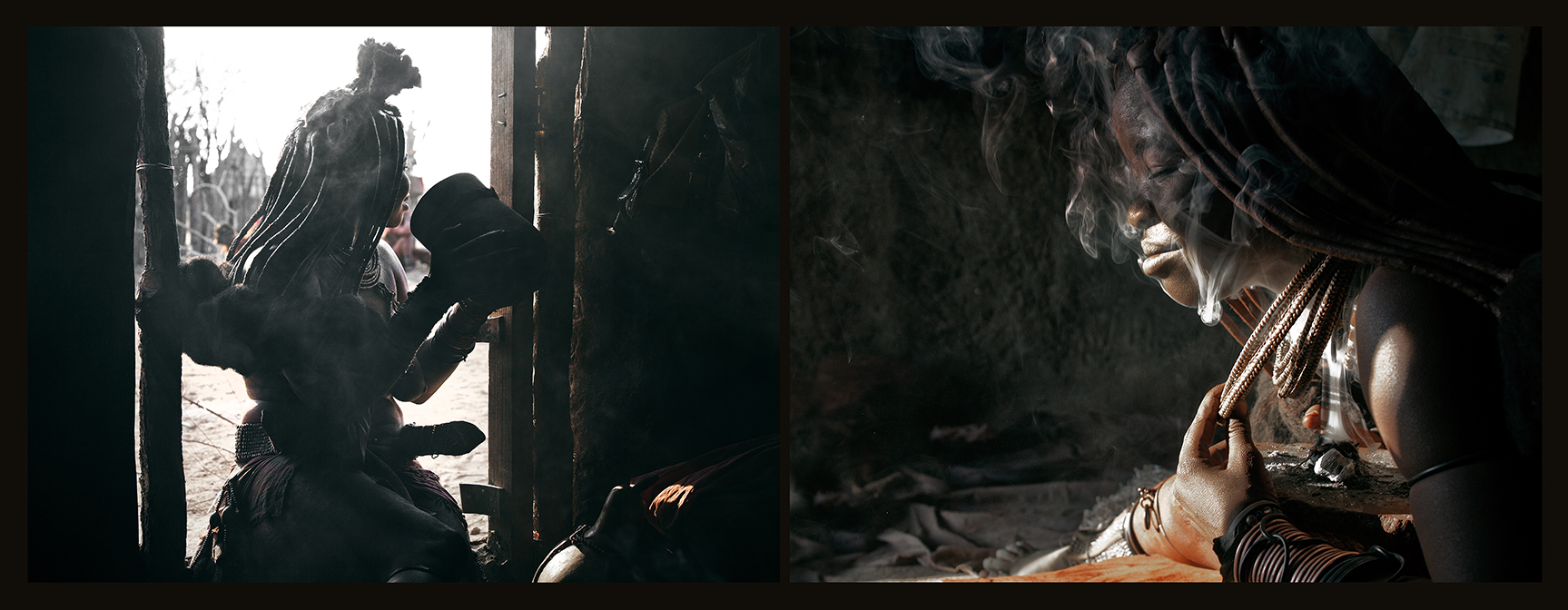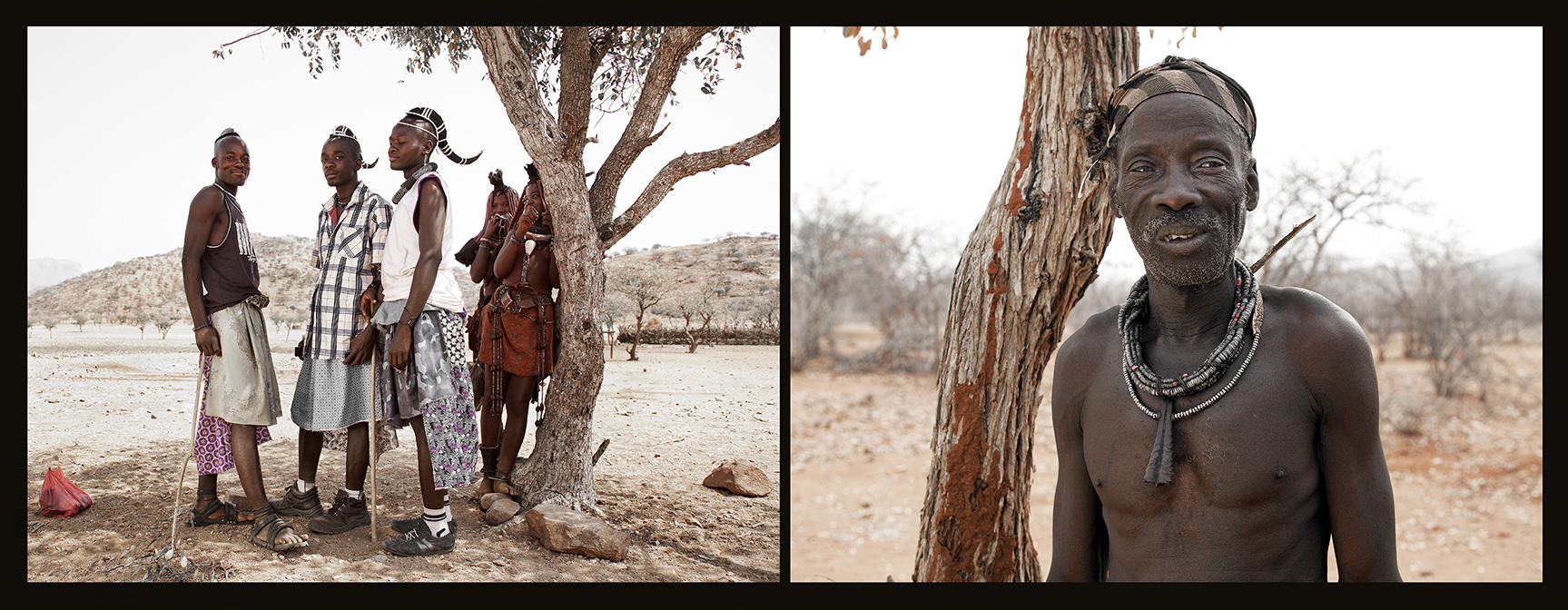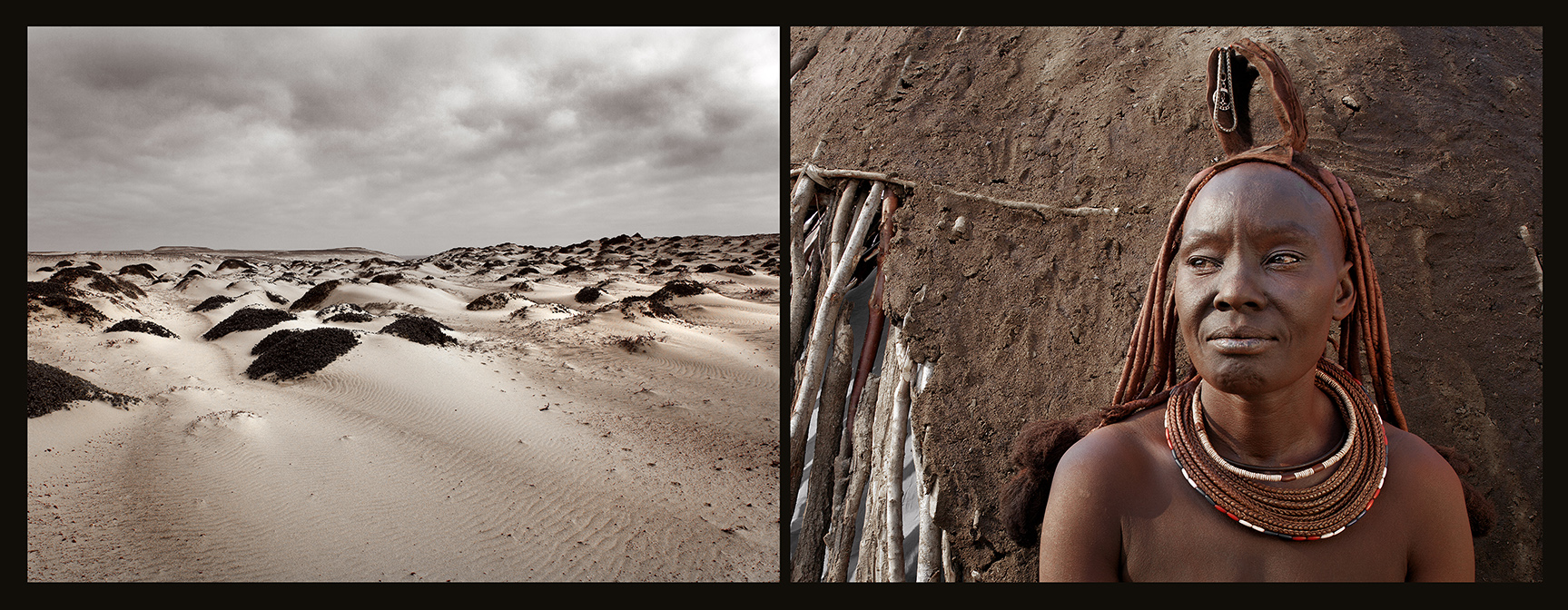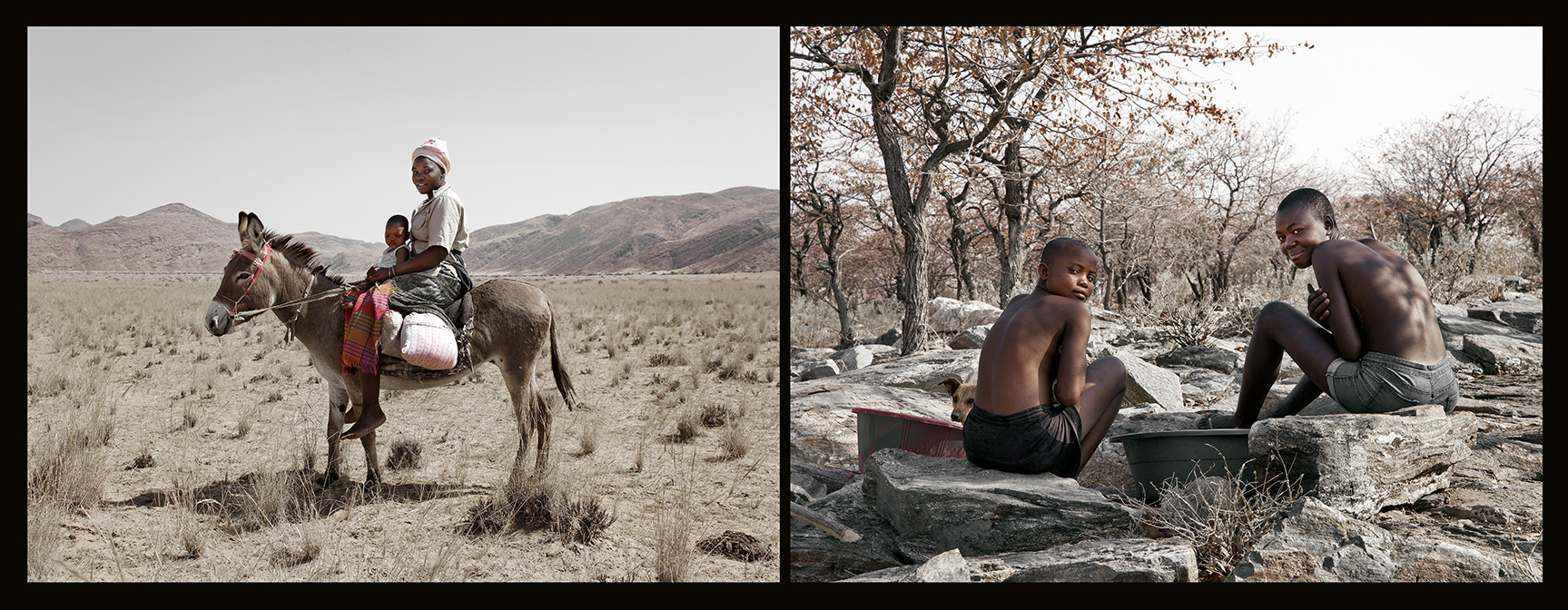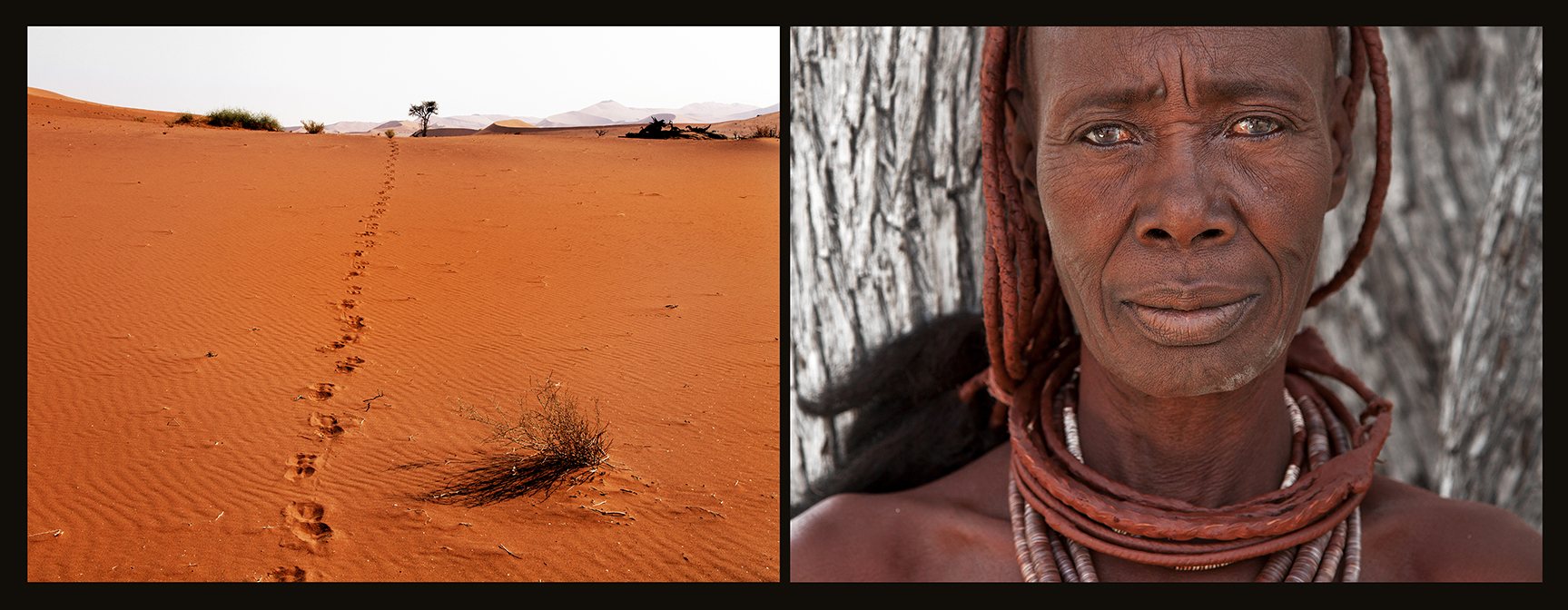Himbaland
I came across the Himbas for the first time in 2011.
I was fascinated by the beauty and way of life of this ancient nomadic people. Especially the unique appearance of the women, with their apparel,
their bodily ornaments, and their pride, awoke my photographic passion.
I wished that I had more time to photograph them.
In 2017 I yearningly travelled again to the dusty heat of Kaoko- and Damaraland in Namibia. In the past six years it hadn't rained.
The cattle herds, pride and status symbol of the Himbas and Hereros in this region, had been dramatically reduced and replaced by goats, which contributed even more to the destruction of this already delicate and arid landscape.
And so the Himbas also became settled.
Not being fluent in English, the national language, and being in a region
without appreciable agriculture or tourism, they now had to struggle with malnutrition, lack of future prospects, and alcohol abuse.
Many young Himbas changed their native clothes and hairstyles for those of western fashions.
I had actually come with the intention of preserving with photos the particular beauty and exotic timelessness of the traditional lifestyle of the Himbas.
Henceforth I photographed the landscape and its people as I encountered them.
In doing so I believed to be documenting the dissolution of an ancient culture.
Back home I began with the sorting and editing of the photos.
With color reduction I consciously enhanced the red tones, thereby bringing forth
the red ocher skin tones exhibited by the women which harmonized with the landscape. With my usual fondness for photographic subject-matching, I then paired photos
in which small stories are concealed, or reflecting my moods and feelings.
The longer I worked on this photo project the more I pondered.
Maybe it was the warm melancholy of the old folks, maybe the laughing of the children; maybe it's not at all about the dissolution of a culture;
maybe it's only about change.
